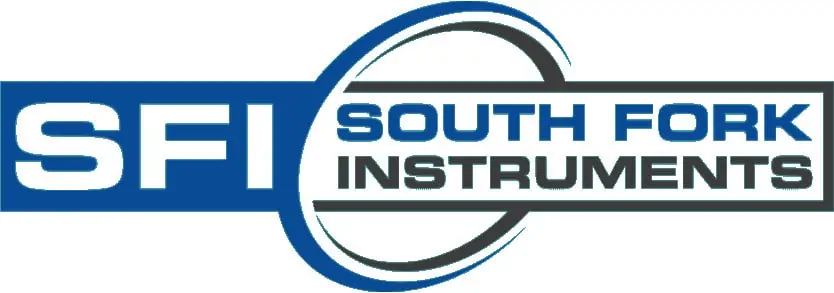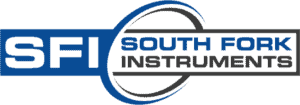When selecting a flow meter for H2 dispensing and distribution, it must be resilient to thermal shock and pressure cycling.
High-pressure flow measurement applications come with a whole series of challenges — and it doesn’t get any easier when it’s hydrogen. In hydrogen dispensing, the need for a highly accurate, repeatable flow meter with wide turndown measurement capability and high pressure rating is paramount.
The only meter that can meet those needs is a Coriolis mass flow meter. But not just any such meter will do. The fluctuating flow rates, pressures and temperatures during dispenser operations mean the sensor must be able to withstand repeated thermal shock and pressure cycling.
Coriolis meters are renowned for high accuracy mass flow measurement performance and should provide mass batch accuracy to a precision better than 0.45%, a key parameter when it comes to meeting local weights and measurement rules and requirements.
Challenges of measuring hydrogen flow
Measuring the flow of hydrogen with a Coriolis meter is no trivial thing as it has relatively low gas density, even at high pressure. For an accurate read, the measurement signal sensitivity and resolution from the Coriolis flow meter sensor play a big part.
Unfortunately, high pressure ratings can only be achieved with stronger tubing and this typically means using tubing with a thicker wall dimension or an alloy that exhibits higher tensile strength.
Tubes with thicker walls are stiffer and therefore provide lower measurement resolution as the “flex” of the tubes is more limited, even with higher power drive energy. The solution to this dilemma is to use a higher strength alloy for the internal meter tubes, but great care must be taken to ensure that such alloys are suitable for hydrogen service.
How to solve the issue with hydrogen embrittlement
Hydrogen has, of course, a small molecular size and therefore a tendency to diffuse into the interstitial spaces in the crystalline lattice of many metals. Known as hydrogen embrittlement, this causes a reduction in tensile strength, and therefore reduces the pressure containing capability of these materials. Hydrogen embrittlement affects many high-strength steels and exotic alloys.
While austenitic stainless steels, such as 304L and 316L, have a reasonable resistance to hydrogen embrittlement, they must have thick wall tubes to contain high pressures. A material with high tensile strength and excellent embrittlement resistance proven in high pressure hydrogen service is Sandvik HP160 stainless steel.
Even with such a suitable high tensile strength tube material, it’s still a challenge to get adequate signal sensitivity and resolution. Tubing made from these stronger materials is also stiffer so it’s not easy to achieve the accentuated oscillation necessary with the common unsupported bent tube Coriolis sensor design. It’s even harder, if even possible, with a slightly bent or straight tube design. The best solution is to use a supported tube design, as found in the Rheonik® Omega tube sensor, as this allows for much larger tube oscillation. The result is much better measurement resolution with stiffer high tensile materials.
More benefits to be considered
Coriolis meters have secondary benefits in hydrogen dispensing.
- Dispensers are compact places where many components are packed into a tight space. Coriolis sensors are ideal in this environment as they do not require the straight pipe run or other flow conditioning equipment seen on many other flow measurement technologies.
- Coriolis meters require virtually no maintenance.
- There is no need for pressure and temperature compensation to correct live readings back to standard volumetric conditions because the primary measured variable is mass.
- If necessary, standard gas volume is easily calculated in the meter from the live mass measurement. The same is true for tube trailer loading and unloading where metering is required on board.
- Coriolis meters are light and robust. The Rheonik meter with its supported tube design is particularly resilient to shocks and bumps as the trailers move around on the highways and byways of their delivery routes.
Go for all-welded design
Hydrogen is a highly flammable gas with low ignition energy that is classified as Group B under requirements for electrical equipment installed in hazardous areas. For safety reasons, Coriolis meter sensors designed for hydrogen service should utilize an all-welded design to mitigate the chance of leaks and tubing should have a sufficiently high burst pressure rating (typically 4 x MAOP) to avoid the chance of tube failure. Sensors that include fittings within their enclosure should therefore be avoided at all costs.
When they make the ideal choice for installation
Connection to the sensors from external pipe systems should be with high pressure, high integrity connections like the Parker AE cone and thread type. Note that many Coriolis sensors do not meet Group B requirements in Class 1, Div. 1 areas, so users are forced to find lower rated areas suitable for such devices to be installed. Rheonik Coriolis flow sensors are fully intrinsically safe and rated for Class 1, Div. 1 Gr. B. This makes them a perfect choice for installation in any area where hydrogen is present.
Making the right selection
Because Coriolis meters are mass measurement devices, the sizing and selection of a suitable sensor for gaseous hydrogen service is essentially the same as for any other gas service application. Using gas flow max/min values and operating pressure temperature values, accuracy and pressure drop estimates over the flow range can be produced and compared for sensors with different sized tubes. The final selection of sensor size is usually a choice between acceptable pressure drop versus accuracy at lower flow rates.
Hydrogen is a valuable industrial gas and in addition to the dispensing and transfer for automobile and truck fueling, it has numerous industrial uses such as in primary metal production, rocket propellant formulation, semiconductor fabrication and edible oil manufacture. Hydrogen gas is also used in chemical processes such as the production of fatty alcohols from acids or aldehydes. In all these applications, high accuracy measurement (including point of sale/custody transfer) is both desirable and necessary.
Why Rheonik Coriolis meters come out on top
Rheonik Coriolis flow meters can be applied into hydrogen service applications with high confidence. Tested by third parties, data confirms compliance with important global standards such as OIML-C R139. Coriolis meters from Rheonik are compact and require almost no routine maintenance.
Built in advanced diagnostics of the meter condition provide real-time insight into performance. Gas mass measurement has less uncertainty than volumetric gas measurement and eliminates the need for measurement correction based upon pressure and temperature changes. Mass measurement uncertainty of better than ± 0.45% of flow rate has established Rheonik as the premier supplier and global leader in Hydrogen gas mass flow metering.
Contact us to learn more about how Coriolis mass flow meters can benefit your operation.

